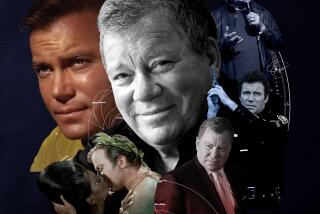Horace Tapscott; Musician, Educator
- Share via
Horace Tapscott, a pianist, composer and educator whose influence reached well beyond his primary association with jazz, died late Saturday night of cancer. He was 64.
Tapscott’s career reached from the closing years of the colorful Central Avenue jazz scene in the 1940s and ‘50s to his role in recent years as a mentor, teacher and role model for hundreds of young people.
He performed with the large ensembles of Fletcher Henderson, Gerald Wilson and Lionel Hampton, as well as such avant-garde figures as saxophonists Eric Dolphy and Ornette Coleman and trumpeter Don Cherry.
Tapscott started out as a trombonist, but turned to the piano while he was in the Air Force in the 1950s. His piano playing was both eclectic and original, reaching to sources ranging from Thelonious Monk and Bud Powell to Cecil Taylor.
He added his unique perspective on African rhythms, creating a playing and composing style that, even in its most dissonant moments, possessed an accessibility that was rare among the jazz avant-garde players with whom he was generally associated.
“Anyone jaded enough to view music simply as a trivial pursuit should be sentenced to one hour in a room alone with Horace Tapscott and his piano,” wrote Michael Henningsen in the Tucson Weekly. “He understood early on that music is as much a culturally enriching educational tool as it is a wellspring of entertainment.”
Tapscott called his music “African American versus jazz.”
His dedication to education reached back to his high school days, when Samuel Browne, a now legendary teacher at Jefferson High School, told him, “I’ll teach you, if you promise to pass it on.”
“When he said that,” Tapscott told Times contributor Bill Kohlhaase in 1992, “it just made sense to me. . . . If I can’t say I’m doing something in the community, then nothing else matters. I don’t need to make albums, but I need to do this.”
And, through his work in the Leimert Park community, he mentored the young musicians at Billy Higgins’ World Stage.
In 1997, Tapscott was presented the first Lifetime Achievement Award by the Leimert Park Jazz Festival.
His physical condition had been grave for weeks. A tribute concert--which had been scheduled well in advance--took place Sunday afternoon at Washington High School just hours after he died. The performances, which included numerous Los Angeles jazz notables, continued for many hours before a full house. Among the many performers was an expanded version of Tapscott’s Pan-Afrikan People’s Arkestra, an ensemble that had occupied his creative attention for decades.
The Arkestra, with its organizational wing, the Union of God’s Musician and Artist Ascension, was formed by Tapscott in the early 1960s in an effort to use community artistic activity as the center for a growing sense of self-awareness and self-respect.
“To begin with,” Tapscott once told a Washington Post reporter, “it was about preserving the music, and to strengthen the musicians in their craft. . . . I figured that if we could just start building our kind of group, maybe we could preserve some kind of respect.”
The Arkestra headlined the annual Drew Medical Center Jazz Festival in 1995 and the Watts Jazz Festival in 1996 and recently toured the United States and Europe.
Many of the musicians who passed through the Arkestra have become leaders and teachers in their own right--among them Arthur Blythe, Nate Morgan, Roberto Miranda and poet Kamau Daaood.
His Union of God’s Musician and Artist Ascension has reached out beyond jazz to include advice, encouragement and employment for musicians, dancers, painters and sculptors. Through it, Tapscott helped dozens of youths develop their musical talents.
Born in Houston on April 6, 1934, Tapscott moved to Los Angeles with his family in 1945. His mother, Mary Lou Malone, was a pianist, a tuba player and a big band leader, and Tapscott often spoke of his early exposure to music through her activities.
Like numerous other jazz artists--Frank Morgan, Dexter Gordon, Sonny Criss and Art and Addison Farmer among them--his early musical perceptions were deeply influenced by Browne at Jefferson High School.
“Samuel Browne was a major influence on my writing and playing because he stayed on you,” Tapscott told The Times.
“When I went into the service, I’d send my music back to him to check it.”
After serving in the Air Force, he played with Wilson’s orchestra and toured with Hampton’s big band before returning to Los Angeles in 1961 to form the Pan-Afrikan People’s Arkestra.
Although he released a substantial number of recordings in the late 1970s, few received significant media attention. An album titled “Aiee! The Phantom,” however, won Cadence Magazine’s 1996 readers poll.
Tapscott is survived by his wife, Cecilia, nine children, 21 grandchildren, two great-grandchildren and one sister.
Services are pending, and a tribute program at Catalina Bar & Grill is scheduled for March 29.
Heckman is The Times’ jazz writer.
More to Read
The biggest entertainment stories
Get our big stories about Hollywood, film, television, music, arts, culture and more right in your inbox as soon as they publish.
You may occasionally receive promotional content from the Los Angeles Times.










